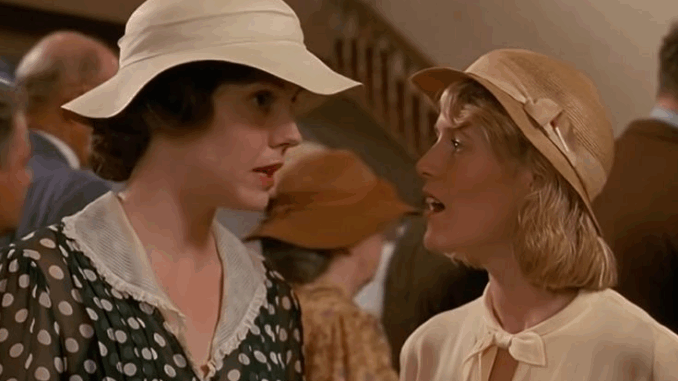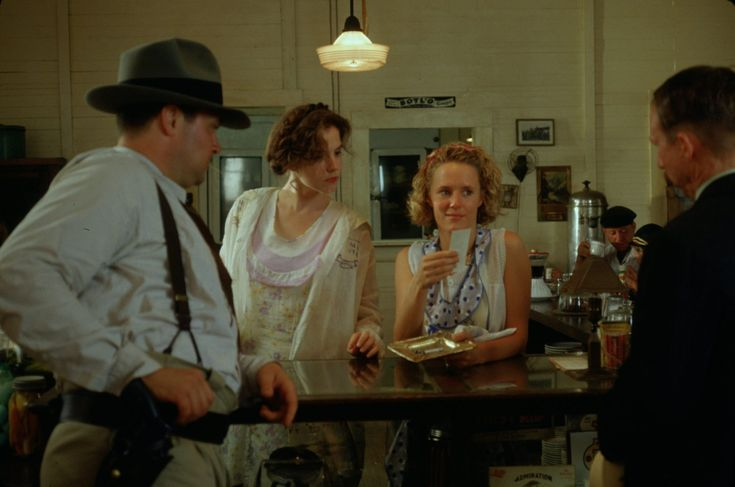
In Fried Green Tomatoes, time is more than chronology. It’s a ghost, a bridge, a storyteller, and sometimes a wound. Unlike many linear narratives, this film braids the past and present into one emotional tapestry — showing us how memories live on not just in our minds, but in our choices, habits, and even in the food we serve.
The past isn’t just remembered in Fried Green Tomatoes. It’s relived, reshaped, and reinhabited.
Two Women, Two Timelines — One Emotional Journey
The film unfolds in two parallel timeframes:
-
The 1920s–30s, through Ninny Threadgoode’s storytelling about Idgie and Ruth in Whistle Stop.
-
The 1980s, through Evelyn Couch’s self-discovery and midlife reckoning.
As the stories intertwine, so do the lives of the women. What happens to Idgie and Ruth directly informs Evelyn’s transformation — as if the past is whispering guidance to the present.
This dual narrative technique reveals a central theme: time does not erase truth or feeling. It only hides them until we’re ready to look again.
Time as Mirror: Then and Now
The juxtaposition of past and present allows the viewer to see mirrored themes across generations:
| 1920s–30s | 1980s |
|---|---|
| Idgie challenges gender roles | Evelyn reclaims power in a male-dominated society |
| Ruth suffers quiet abuse | Evelyn struggles in a silent marriage |
| The café is a site of resistance and love | The nursing home becomes a site of rebirth for Evelyn |
Despite decades apart, the women confront parallel battles: loneliness, societal limits, grief, and the longing for freedom.
Time, in this context, becomes a mirror — reflecting how far we’ve come, and how far we still have to go.

Memory: Time’s Emotional Ghost
Ninny Threadgoode is not just a narrator. She is time incarnate — a living memory vault. Every story she tells revives a world that would otherwise be gone:
-
She resurrects Buddy’s charm.
-
She brings back Ruth’s grace.
-
She keeps Idgie alive through rumor, laughter, and mystery.
As she says, “It’s funny how you can look back on life and it all seems to make sense.”
Through Ninny, we see that memory is not a passive act — it’s active preservation. Her storytelling is survival. For her, and for Evelyn.
The Weight and Mercy of Time
While time can be cruel — taking loved ones and changing the world — it also brings unexpected gifts:
-
Evelyn becomes braver.
-
Ninny finds companionship.
-
Ruth’s legacy outlives her, in the form of the café’s spirit and Idgie’s lifelong devotion.
Time, then, is not a villain. It is the soil where growth happens, if one is willing to tend it.
Food as a Time Bridge
The act of cooking — especially at the Whistle Stop Café — becomes a timeless ritual. A plate of fried green tomatoes isn’t just a meal. It’s:
When Evelyn eats Ninny’s tomatoes near the end of the film, it’s more than comfort food. It’s communion — with Ruth, with Idgie, with the very essence of Whistle Stop.
Time’s Final Trick: Who Was Idgie?
The film leaves us with one final, delicious ambiguity: Is Ninny actually Idgie?
The timeline makes it possible. The spirit makes it likely. But the film never confirms.
This choice honors one of the film’s core truths: some stories are stronger when left mysterious. Sometimes, time doesn’t answer — it invites us to wonder.
The Past Isn’t Past
Faulkner once wrote, “The past is never dead. It’s not even past.” Fried Green Tomatoes embodies that idea fully. Time in the film is not a straight line, but a circle — looping through love, loss, and healing again and again.
In the hands of women who remember, retell, and rebuild, time becomes not a tomb, but a garden.
Post Views: 40
